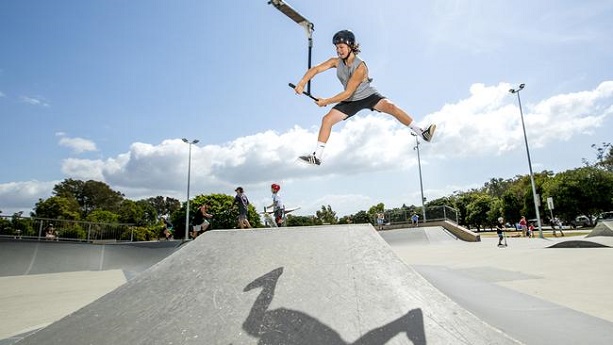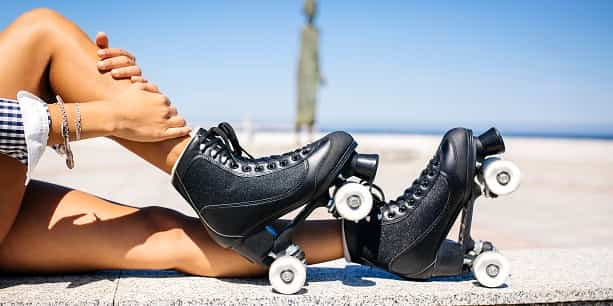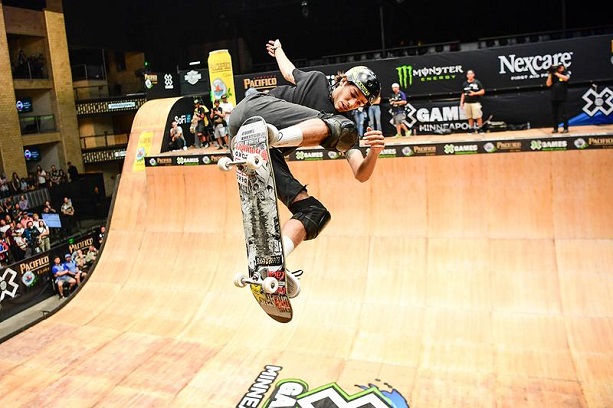The Rise of Street X-Sports: Scooters, Skates & Skateboards
We’ve all been kids, right? Most of us remember riding our roller blades, scooter and skateboards around the neighbourhood or even showing off a trick or two at the local skating rink. Well, for some that passion didn’t end with their formative years and persisted, even thrived in their adulthood. Street x-sports are an ever-growing branch of urban recreation and between BMX bikes and roller skates, the options are wide and x-tremely fun. Let’s take a ride through these gravity-and-inertia-propelled personal vehicles and their features
Scooters
Scooters are a popular mode of transport nowadays but we somehow keep forgetting that there was a non-electric version of them back in the early 2000s. Before they were motorized, the street sport scene was dominated with riders on their custom pro scooter. And even though we don’t see them that often, pro scooters never fully went out of style.

Scooters, for the most part, today, are two-wheeled transport vehicles functioning like a crossbreed between a bike and a skateboard. Because they are usually safe and easy to ride, many parents consider buying scooters for their children. However, in this article, we’re only going to focus on pro models and how to choose the right one.
Preassembled scooters are a dime in a dozen and can be found nearly anywhere, but for those of you in the market for a custom pro scooter, here’s a list of what to consider.
Wheels

Scooter wheels are made off of a plastic core embedded into polyurethane (PU) thread, which is great for urban use and prevents damage to the wheel from all the harsh city conditions. Wheels can come in large form (180, 200 or 230mm diameter) and small form (100, 120, 125 or 145mm diameter). The larger wheels are good for performance (faster) and comfort (fewer vibrations), but make the scooter less convenient to lug around. On the other hand, the smaller wheels are good for convenience (portable) but score lower on performance (slower) and comfort (more vibrations).
Deck
The deck is what you’re standing on and as a rule of thumb, it should be customised for the rider’s preferences. Wider decks provide more stability and comfort, but sacrifice portability and initial inertia. Higher decks through sacrifice stability and comfort, but provide more space between the deck and the ground, hence decreasing the chance of you scraping the bottom. The best option for custom-built scooters is to go wide and short.
Suspension
The suspension is the difference between a bumpy and a smooth ride. Though this adds a lot to comfort, it does make the scooter heavier and less convenient, so, it comes down to personal choice.

The Breaks
As mentioned previously, nearly all scooters possess a rear fender friction brake, but some people prefer to attach bicycle-style handbrakes. Though these do make the braking system more familiar and faster, they add weight and complexity to the scooter and are only available for certain brands.
Skates
For most of us, skates or roller blades are etched in our earliest childhood memories. Riding them to the park, to the store, heck, some of us rode them even in our houses. But it’s never too late to develop a crush on roller skates as an extreme street sports. Rollers have been used not just for transport, but also as additions to popular sports like hockey. So, it makes sense to perform tricks with them on the streets where no ice is needed. Unlike scooters, skates have much less moving parts, so they mostly depend on the wheels.
To clarify, regular skates and inline skates are not interchangeable terms. Standard roller skates have two sets of two wheels, making them like tiny skateboards for your feet, whilst inline skates have a blade-like row of wheels in a straight line. Though fundamentally similar, we’ll focus on inline skates from this point on, for they are most often used in street x-sports.
Wheels

Bigger wheels are better for longer distances because they make it easier for you to maintain a constant speed with the use of less energy. The recommended size is 90-100mm in diameter. Smaller wheels are better for shorter distances. This will make the skates more maneuverable, making it easier to stop and turn. The recommended wheel size is 80-84mm.
Wheel durometer indicates the hardness or softness of the wheel itself, depending on the hight of the associated “A” number. Softer wheels have grip and shock absorption, but shorter lifespan and less speed, whereas harder wheels have a longer lifespan and can reach higher speeds, but have less grip and shock absorption.
The wheel bearings are the most important part of the wheel, for they make the wheel spin smoothly. Because of this, you should avoid sand, dirt, water and moisture as much as possible to extend the bearing’s lifespan.
Skateboards

Skateboards are probably the most common x-sports choice of the bunch so far. Four wheels attached to a board, it’s a simple concept and yet, for millions of people skateboarding is a passion, lifestyle and sport at the same time. Like our previous entries, the skateboard is a highly customisable item and you should consider the following factors when doing so.
Deck
Decks between 19cm to 20.3cmin width are recommended for street skaters. For riding pools and parks, you should start with 20.3cm or larger.
Wheels
Street skating wheels are smaller than park wheels since they’re lighter and more responsive, making them easier to flip. Anything from 49 to 52 mm diameter is a good size for street skating, whereas a 54 to 60 mm diameter is better for transit
Trucks
Truck size and deck size are closely related. You should always make sure that the axle length matches the width of the deck. This is to ensure that once the trucks are on, they should fit with the width of the deck and not sticking out or in too much. For a standard 20.3cm deck, a truck size of 149mm should be good.






